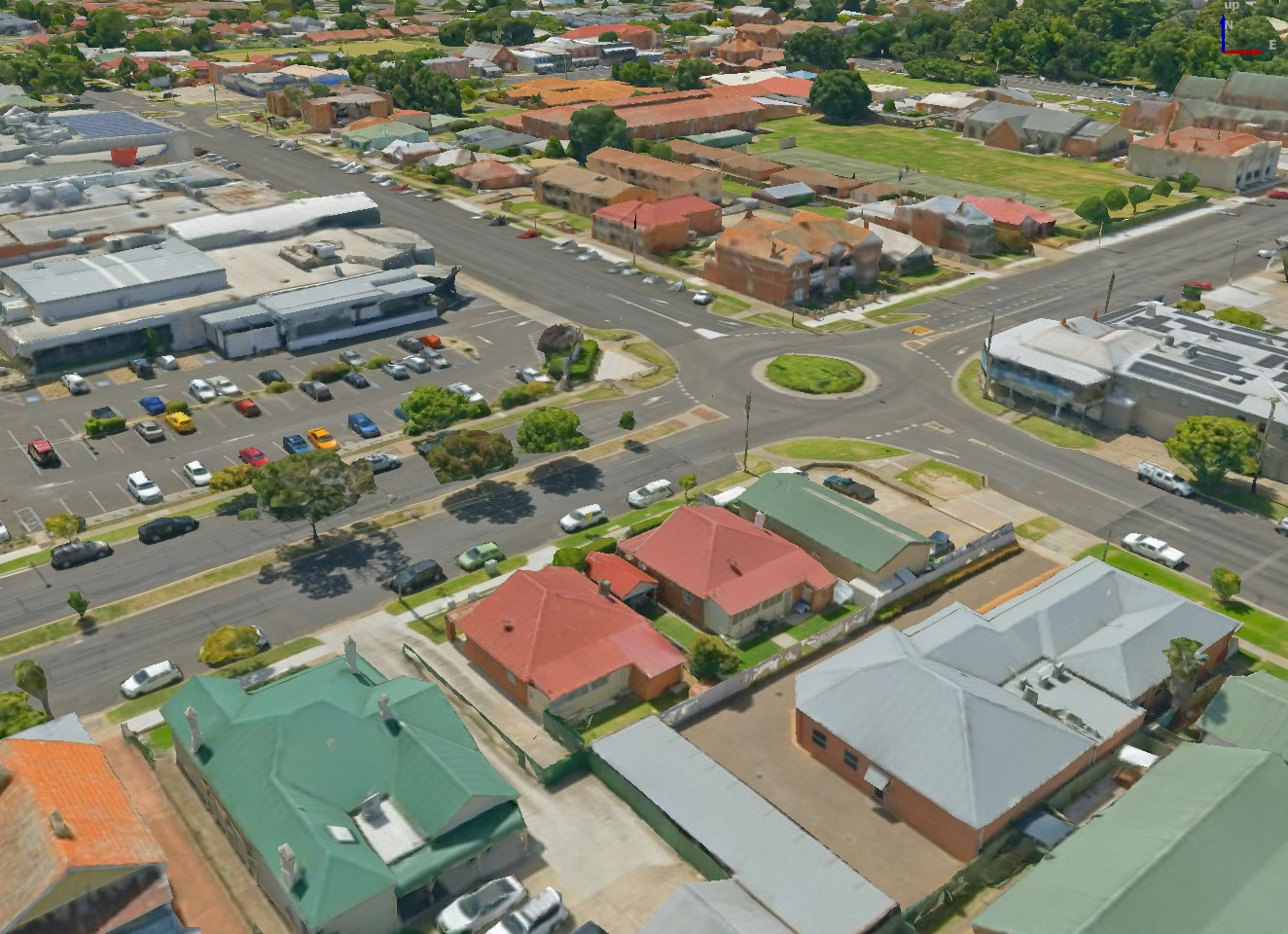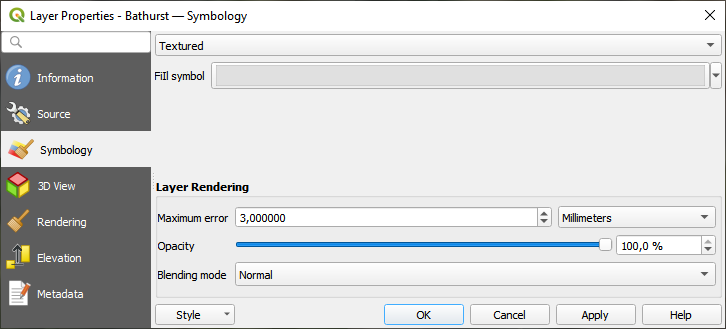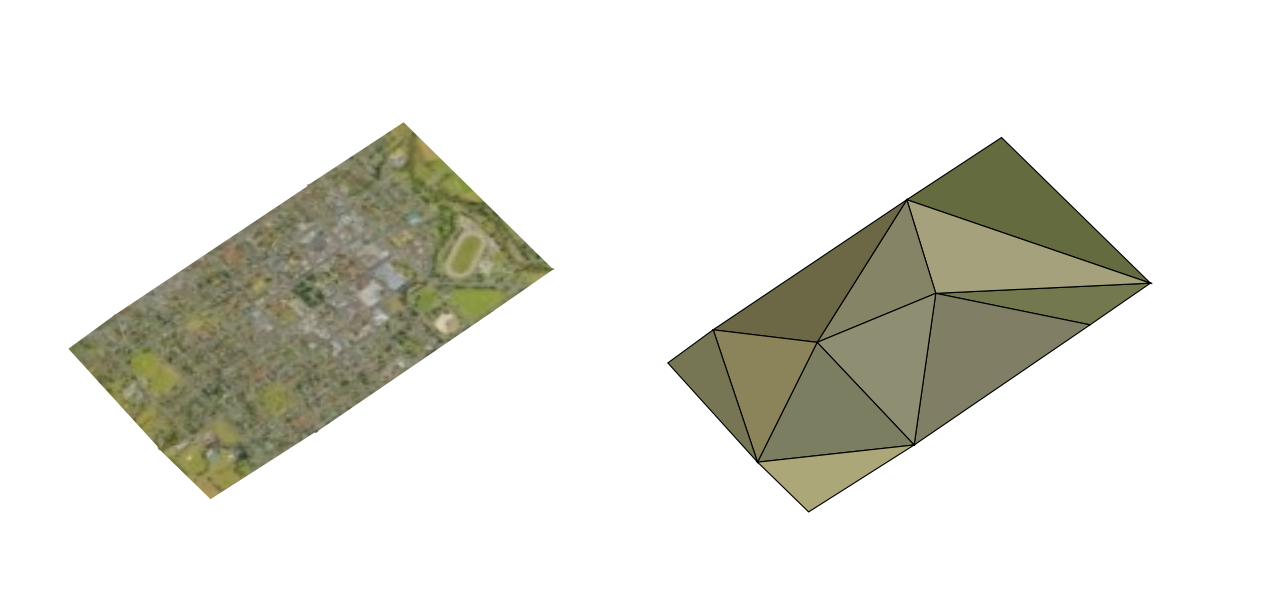17. Working with 3D Tiles
17.1. What are 3D Tiles?
3D tiles are specification for streaming and rendering large-scale 3D geospatial datasets. They use a hierarchical structure to efficiently manage and display 3D content, optimising performance by dynamically loading appropriate levels of detail. This technology is widely used in urban planning, architecture, simulation, gaming, and virtual reality, providing a standardised and interoperable solution for visualising complex geographical data.

Fig. 17.1 Example of 3D tiles
See Using 3D tiled scene services for instructions on how to add these data sources to QGIS.
17.1.1. State of 3D Tiles Support
Currently, QGIS supports two formats of 3D tiles:
“Cesium” 3D Tiles are used primarily for complex 3D models of buildings or whole cities. Such datasets can be provided by cloud-based platforms such as Cesium Ion or Google (Photorealistic 3D Tiles).
Quantized Mesh tiles are used for terrain elevation data.
Supported 3D Tiles features:
QGIS currently has partial support for 3D Tiles 1.0 and partial support for 3D Tiles 1.1.
For 3D Tiles 1.0, the tile format Batched 3D Model (
b3dm) is supported. The tile formats Instanced 3D Model (i3dm), Point Cloud (pnts) and Composite (cmpt) are not supported yet.For 3D Tiles 1.1, the
3DTILES_content_gltfextension is supported, so tile contents may also be encoded as glTF 2.0 (text or binary). TheEXT_mesh_gpu_instancingextension is not supported yet.Currently only explicit tiling is supported. Implicit tiling is not supported yet
Currently only tilesets using EPSG:4978 are supported.
17.2. 3D Tiles Properties
The 3D tiles Layer Properties dialog provides the following sections:
17.2.1. Information Properties
The Information tab is read-only and represents an interesting place to quickly grab summarized information and metadata on the current layer. Provided information are:
based on the provider of the layer: name, URL, source type and path, number of zoom levels
custom properties, used to store in the active project additional information about the layer. More properties can be created and managed using PyQGIS, specifically through the setCustomProperty() method.
the Coordinate Reference System: name, units, method, accuracy, reference (i.e. whether it’s static or dynamic)
picked from the filled metadata: access, extents, links, contacts, history…
17.2.2. Source Properties
The  Source tab displays basic information about
the selected 3D tile, including:
Source tab displays basic information about
the selected 3D tile, including:
the Layer name to display in the Layers Panel;
the Coordinate Reference System: Displays the layer’s Coordinate Reference System (CRS). You can change the layer’s CRS, by selecting a recently used one in the drop-down list or clicking on the
 Select CRS button (see Coordinate Reference System Selector).
Use this process only if the layer CRS is wrong or not specified.
Select CRS button (see Coordinate Reference System Selector).
Use this process only if the layer CRS is wrong or not specified.
17.2.3. Symbology Properties

Fig. 17.2 3D Tile Layer Symbology
By default, the layer is styled using texture, but you can change it
to see the wireframe mesh behind the scene by choosing Wireframe
in the drop-down menu. You can also, change the mesh fill and line symbols
similar to the vector polygons.
Checking  Use texture colors will render each mesh element
with the average value of the full texture.
This is a good option to try when dealing with a large dataset and
want to get a quick overview of the data.
Use texture colors will render each mesh element
with the average value of the full texture.
This is a good option to try when dealing with a large dataset and
want to get a quick overview of the data.

Fig. 17.3 3D Tiles - textured and wireframe
From the Symbology tab, you can also set some options that invariably act on all features of the layer:
Maximum error: This parameter determines the level of detail displayed in the 3D model. Similar to point clouds, 3D tiles often contain more information than necessary for visual representation. By adjusting this setting, you control the balance between display density and rendering speed. A larger value (e.g., 5 mm) may introduce noticeable gaps between elements, while a smaller value (e.g., 0.1 mm) could lead to the rendering of an excessive number of details, potentially slowing down the rendering process. Different units can be selected to tailor the setting to your specific needs.
Opacity: Adjusts the visibility of the underlying layer on the map canvas using this tool. Use slider to tailor the visibility of your scene layer according to your preferences. Alternatively, specify the exact percentage of visibility through the menu next to the slider.
Blending mode: You can achieve special rendering effects with these tools that you may previously only know from graphics programs. The pixels of your overlaying and underlaying layers are mixed through the settings described in Blending Modes.
17.2.4. 3D View Properties
Maximum screen space error: Determines the threshold for swapping terrain tiles with more detailed ones (and vice versa) - i.e. how soon the 3D view will use higher quality tiles. Lower numbers mean more details in the scene at the expenses of increased rendering complexity.
 Show bounding boxes: Shows 3D bounding boxes of the
terrain tiles (useful for troubleshooting terrain issues).
Show bounding boxes: Shows 3D bounding boxes of the
terrain tiles (useful for troubleshooting terrain issues).
To view the data you can open  New 3D map view.
New 3D map view.

Fig. 17.4 3D Map View
17.2.5. Rendering Properties
Under  Scale dependent visibility,
you can set the Maximum (inclusive)
and Minimum (exclusive) scales,
defining a range of scales in which features will be visible.
Out of this range, they are hidden.
The
Scale dependent visibility,
you can set the Maximum (inclusive)
and Minimum (exclusive) scales,
defining a range of scales in which features will be visible.
Out of this range, they are hidden.
The  Set to current canvas scale button helps you
use the current map canvas scale as boundary of the range visibility.
See Visibility Scale Selector for more information.
Set to current canvas scale button helps you
use the current map canvas scale as boundary of the range visibility.
See Visibility Scale Selector for more information.
17.2.6. Elevation Properties
The  Elevation tab provides options to control
the layer elevation properties within a 3D map view.
Specifically, you can set:
Elevation tab provides options to control
the layer elevation properties within a 3D map view.
Specifically, you can set:
Elevation Surface: how the 3D layer vertices Z values should be interpreted as terrain elevation. You can apply a Scale factor and an Offset.
17.2.7. Metadata Properties
The  Metadata tab provides you with options
to create and edit a metadata report on your layer.
See Metadata for more information.
Metadata tab provides you with options
to create and edit a metadata report on your layer.
See Metadata for more information.



